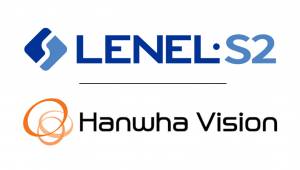2006 was a very positive year for the Latin American economy. There were higher growths than expected and this was reflected in the growth observed within electronic security. We started this series of market studies with the integration services.
By Julián Arcila
Study of the Latino integration market in 2006
The balance is more than positive. It was a record year in terms of exports and some countries presented exorbitant growth, such was the case of Venezuela (10%), the great beneficiary of the rise in crude oil prices; Cuba (12.5%), Argentina (8.5%), Panama (7.5%) and Peru (7.2%). The Caribbean was undoubtedly the region that grew the most, which confirms the comments of the various experts in the sector in the sense that important electronic security projects are being seen in this area. (Figure 1)
One of the most important factors was the increase in trade, which benefited South American nations, with high-growth economies, such as China and India, which added to the 8.4% increase in the volume of exports, which in turn included a 21% increase in the value of exports. The most notorious development was the reduction in poverty rates by 10 percentage points.
But let's take a turn to what concerns the world of electronic security, more specifically the integration services sector, and analyze from the hand of six professionals from six integrating firms in the region, who obtained the necessary information to know the movement of the segment in 2006. They are: Octavio Villa, from Panamericana de Seguridad (Mexico); Reginaldo Cardoso de Oliveira, from Trielo, Brazil; Gabriel Apel, from Xiden, Argentina; Francisco Zevallos, of Boxer (Peru); Alejandro Soto, de ISS Integral Security Systems (Costa Rica); and Jaime Caicedo, from Robotec (Colombia).
Migration to the electronic
Many sectors regularly clash about the relationship that physical security can maintain with electronic security. For many people, technology has a good chance of displacing human-based security, basically because it can be more efficient, in some cases, and because it is certainly more effective.
The important thing is to understand that neither modality is exclusive and that if a company wants to have the highest security standards it must consider both possibilities. In Latin America, the electronic part has been growing fortunately for manufacturers, which may be a sign that the region is improving in the design and application of the various possible security schemes.
In Mexico, there is still a lot of dependence on security guards, although the application of systems such as CCTV and access control has reduced decision-making by these personnel. In Costa Rica the relationship is still very even and remains at 50-50.
In Colombia, significant investments are still made in security guards, which are reinforced with the technology available in the market. According to the professionals consulted by this media, in this country the awareness is emerging that electronic security is cheaper than human security; a clear trend is that the electronic part could displace physical surveillance systems in a few years.
In Brazil, a nation that had been mainly the domain of the physical part, the trend seems to change and sources commented to this magazine that the relationship is 60-40% in favor of the electronic part, while in Argentina they are still seen in a complementary way, with a particular situation related to the training of new security guards for the operation and management of electronic monitoring centers.
Nations with disparate characteristics
The consumption of electronic security in Latin America and the evaluation of the main economies from the market point of view for this type of technology is not an easy task. According to the sources, it is possible to find both good consumers and buyers of technology as well as others not so strong. In general, public order situations derived from processes of social inequalities are a factor with a high impact on the decision to purchase electronic security systems, but in addition to the above is the growing construction "boom" in the region, the latter element that has been influenced by the growing foreign investment in each of the Latin countries. In the following lines, a qualitative description of each of the analysed markets will be made.
Mexico
To begin with, speaking of Mexico, described by many as the largest consumer of security technology in the region and where it is presumed that there are large contracts for integration services, thanks to the size of the companies that are based in this country, It is important to note that according to Octavio Villa, director of the Pan American Security Integrator (Panase), the Aztec country is increasing interest in electronic security systems, which allows integration projects with a greater degree of sophistication to be presented every day.
Now then. As far as manufacturing is concerned, great developments in security technology are not yet found in this nation, placing itself then in the category of large importer, whose main supplier is the United States, although nations such as Spain, France, the United Kingdom and Israel are gaining more market every day.
The public order situation is a factor of great importance for the public administration, which invests significant resources in the fight against crime, a situation that has been reflected in a greater effectiveness that has led to the dismantling of terrorist groups such as the EPR.
Private investment in electronic security and integration has stood out in the growing real estate segment; it is in this field that the greatest investments are being made.
Costa Rica
This Central American nation, one of the smallest in territorial extension, but also one of the most desired by tourists due to its great natural wealth, lives a different situation from that of Mexico and it can be said that it is in a phase of exploration.
According to Alejandro Soto, administrative manager of Integral Security Systems, one of the most recognized integrators in this nation, Costa Rica is not yet a large consumer of electronic security and is just knowing the advantages and features offered by this technology. In addition to the above, this nation is not exactly one of the most violent in the continent, so there has not yet been a widespread interest in acquiring or contracting services for protection.
The same situation is observed in the manufacturing segment, in which there have not yet been notable developments in Tico land; the main providers of security technology are the United States and the exporting countries of the Far East. "The companies that dominated the market during 2006 were those that have been characterized by support and after-sales service, such as Pelco, NVT and FIRE Lite, among others.
The arrival of foreign firms in the country caused them to begin to enter its territory stricter regulations on security; given that one of its main policies was the copying of the nascent protection systems based on the originals established in their countries of origin, investment in security was presenting in this period a remarkable growth.
Colombia
In the case of Colombia, this northern South American nation has traditionally been a good consumer of technology and integration services, thanks to a somewhat negative record when it comes to public order. Since the mid-90s, security integration services began to be contracted, even though at that time they were not very common in other nearby countries. "This has made the country a great consumer of security services and systems," said Jaime Caicedo, general manager of the integrator and manufacturer Robotec.
Imports in this segment, during 2006, came almost entirely from the United States, although imports of security equipment from Asian countries such as China, Taiwan and Korea have been increasing for some time. Local developments are few, but unlike the previous two countries, in coffee land the first local developments in terms of security were already presented to the market, among which it is worth mentioning those of Zebra Electrónica, which consist of electromagnets and access controls, as well as those of Robotec, consisting of biometric fingerprint readers, which can be integrated with access control, and CCTV, among others.
The current public order landscape in Colombia has improved compared to past years, when it was one of the worst in Latin America. The presence of Alvaro Uribe Vélez in the presidency of the republic has given an additional push to the issue of security. By that time, the country was in the midst of peace negotiations with paramilitary groups, which had managed to reduce crime rates in major cities. However, the actions of the guerrillas remained a worrying factor for the population. According to Caicedo, "although the situation has improved considerably in recent years, it will take many more so that people can breathe an atmosphere of tranquility in this area.
Compared to private investment, it can be said that this is maintained permanently, reflected mainly in the investments made by multinational firms and construction companies.
Peru
Currently, the Inca nation is one of the countries that captures the highest rates of foreign investment in the Latin American environment. Developments in its mining, textile and fishing industries, as well as in other agricultural sectors, have been increasing the entry of foreign resources into its economy.
With regard to security consumption and integration services, 2006 represented a good year for this country, ranking at 6 or 7, on the scale of 1 to 10 of Francisco Zevallos, president of the Peruvian integrator Boxer.
Local developments in electronic security are incipient and are limited to electrical fences and devices for communication of alarms via cell phone. "Apart from such accessories, we could say that 99% of the equipment used in electronic security is imported, mainly from the United States, Korea, Japan, Canada, Taiwan, China and the European Union," Zevallos said.
When it comes to public order, Peru is a relatively stable country, from a social point of view. "A tense calm is maintained, because we have been dragging pending issues of a social nature, which means that from time to time there is some type of public disorder such as marches, highway takeovers and strikes with their quotas of violence," Francis illustrated.
Despite the above, it can be considered one of the most stable in Latin America, although there are still high rates of poverty and marginalization that have proportionally increased crime figures. "Such a situation has increased the demand and requirement for increasingly sophisticated security systems, even in the area managed by state agencies such as citizen security," Zevallos said.
Brazil
Traditionally Brazil has been more in the corner of producers and manufacturers than consumers as such. However, for about four years, this trend has been balanced and the South American colossus has increasingly begun to use electronic protection systems, as a complement or sometimes as a replacement for traditional guard and surveillance systems.
This was corroborated by Reginaldo Cardoso de Oliveira, commercial director of Trielo, a Brazilian integrator and manufacturer, who said that the nation has significantly increased the volume of purchases in this segment, thanks to new real estate developments, both commercial and residential, where builders are using the implementation of security systems within the property as a factor of high added value that can influence the purchase decision.
As for the manufacture of solutions in its territory, Brazil has been growing and there are many innovations that can be purchased today in "carioca" soil and among which the developments in access control of the same Trielo, Acura, Digicon, Telematics and Dimep, among others, stand out. In CCTV, Contex, Microchip and Tecvoz stand out, among others.
In Brazil, as in other nations of the region, the private sector is driving the demand for integration services in the region, being in a proportion of 70% - 30% with respect to the government sector.
Argentina
It could be said that Argentina enjoyed during 2006 a good year in terms of consumption (see interview with Eng. Enrique Greenberg on the panorama of electronic security in this country, published in VENTAS DE SEGURIDAD in the July/August edition of this year) of security technology. Gabriel Apel, commercial director of Xiden, one of the most recognized integrators in Argentina said with respect to the above: "Argentina is a good consumer of security technology and at this time is becoming aware of the best use of systems when they are integrated."
As for the origin of the security technology that is marketed in this country, Apel said that most of it is imported from the United States, Korea and China, as far as CCTV is concerned. As for access control, there are already local supplies, although what is imported comes mainly from the same nations with the exception of Korea.
Private investment stands out, as in the rest of Latin America, with which we could unify that this has perhaps been the factor of the market that has most driven the demand for electronic security systems and the integration between them.
Partial figures and determining factors
One of the questions that always arises when talking about Latin America is about the real size of the different markets that are seen in the region, as well as the participation that each of the main actors has. In this market study, we tried to obtain information with relative success. For our readers, it is important to clarify that the figures presented below are an approximation of the reality of the market, more than other tools are needed to have a real approximation to its size, which we will try to achieve over time.
To start with Mexico, Octavio Villa, of Panamericana de Seguridad, assures that in the period between 2004 and the end of 2006, the demand for integration services maintained a constant rate of growth of 50% per year, and reiterates that the great cause of this was the important number of constructions in the Aztec nation.
"Now, if we review the factors that have influenced growth, we must mention public insecurity, the market demand for real estate with greater 'smart' security benefits, greater valuation and return on investment of buildings equipped with security and automation systems," Villa said.
This coincides with what Alejandro Soto, from ISS, from Costa Rica, said. In his opinion, the demand for integration services that he had in his country presented during 2006 a growth of 50% with respect to the previous year.
"The factor with the greatest weight has been the growth of construction, which is at the same time the product of foreign investment in the real estate area, as well as in production plants and service offices," Soto explained.
In Colombia, on the other hand, we cannot speak of a percentage, but there are sources that indicate that the growth of the market has been exponential year after year and that so far in 2007, just to take as a reference, the sum of the projects triples what was seen during 2006.
For Jaime Caicedo, "the public order situation has been the main cause for the generation of investment in security. Among the specific factors that have generated growth in demand are: the Government's security policy, which has provided important resources for this issue, and the reactivation of construction. New projects, especially office projects, are big consumers of security technologies."
Peru has been one of the nations that has obtained the highest growth in the electronic security segment, reaching in the last four years an average growth of 100%, although in the integration of systems the increase is 60%, which is still very high for the region.
What has led to this situation, in Zevallos' opinion, is that "as in the rest of the world, globalization, the greater diffusion of technological advances and above all the great development of computer systems, which are increasingly within the reach of the common man, have led to a greater knowledge and demand for different high-tech systems including, of course, those dedicated to electronic security; a notorious example is what has happened with CCTV systems, with their digital storage and operation equipment (DVRs) that today undoubtedly occupy 60% of the total demand for electronic security. If we add to this the increase in crime we will have the perfect and determining equation of the increase."
In Brazil, the sector comprising CCTV, biometrics, access control and alarms, among others, obtained a growth of 15.4% in 2006 compared to 2005, which meant a movement of 1.25 million reais (U$625 thousand at today's price), as reported by the analysis of the Abinee (Brazilian Association of the Electrical and Electronic Industry), made by Frost & Sullivan and delivered to this medium by Reginaldo Cardoso de Oliveira. The same study ensures that for the coming years there will be an annual increase of 25% in this same market.
"I think what has generated consumption and influenced this growth is the situation of insecurity in large cities," Reginaldo said.
On the other hand, Argentina showed a growth of 22% in terms of demand for integration services, according to Apel. The reasons outlined for this growth are the growing economic development of the country, the increase in crime and organized crime. If growth is added and averaged, the growth averages of the six countries analyzed (with the exception of Colombia, from where no encrypted growth was obtained) it could be said that the growth in demand for services had an average increase of slightly less than 40%. (Figure 2)
Who buys?
In Latin America, as has been stated throughout this note, those who impose the rhythm of the way the market will be configured are private investors, who for the moment have several tools to take advantage of the investment they are making by acquiring and implementing electronic security. However, the trend of the government sector as a major player is changing since recent months and in this way it has been positioning itself as the customer that everyone wants to serve.
But who are the ones who are leading the purchase within the private segment? This is what the interview we did with the professionals mentioned threw up.
In Mexico, the government sector, as well as that of corporate offices, have been strengthening in terms of demand for electronic security systems. Of the 100% that the market is composed, 60% is equivalent to government investments, 25% to those made by the commercial sector, 10% are made by the industry in general and others (unspecified) represent 5%. (Fig. 3)
As for the type of projects that occur mainly in this market, 80% is represented by installations in new constructions, while remodeling and refurbishment is slightly below 20%.
In Costa Rica, on the other hand, the new real estate sector represents 60% of the demand for security technology, services contributes 25%, while the industry cooperates with 15%. (Fig. 4)
Most of the projects seen in Costa Rica (80%) refer to the integration between video and the IT sector. Under another type of segmentation it could be said that 60% are equivalent to new constructions, 10% remodeling and 30% readjustments.
In Colombia, according to Jaime Caicedo, it is the state that is making the best investments in security. "Another big demander is the construction companies, there are many important commercial projects that are being assembled with integrated security systems," he said. Realignments account for the largest percentage of security investments.
According to research done with firms in the country, this year has seen public tenders that are around U$25 million.
In Peru, the state sector is not the largest buyer, leaving 90% in the hands of the private sector. Of this percentage, 45% is in the hands of the banking sector, 30% comes from the industrial sector, 10% from the mining sector and 5% from the commercial sector. (Fig. 5)
Of the 100% of the projects that Boxer led in 2006 in Inca land, 40% were composed of remodeling of security systems, another 40% referred to new facilities and 20% consisted of readjustments.
In Brazil something similar happened to Peru, but in the South American giant the state sector participated with 30% of the demand for integration services. The rest of the investments were distributed as follows: large companies, 20%; civil construction, another 20%; trade, with 30% and banks with only 10%. It is important, however, to bear in mind that the state sector was superior, in terms of investments, to each of the sectors that make up the private sector, looking at them separately. (Fig 6)
Of all the total investments made in the integration of security systems, 60% corresponded to readjustments, while the remaining percentage was destined to new constructions, according to what was expressed by the representative of Trielo.
In Argentina, meanwhile, it does not seem that the public sector has had a very relevant participation and according to Apel; in Xiden, 100% of the facilities set up during 2006 were highly influenced by the private sector, broken down as follows: banking segment (60%), casinos and bingos (30%) and industrial sector (10%). (Fig. 7)
Apel explained that "the largest number is related to the updating of the systems (80%), since new digital recording equipment with greater intelligence and greater linkage to Ethernet networks, access control systems with high levels of IP connectivity and integration with the rest of the systems are sought; the remaining 20% is new construction, where state-of-the-art technologies such as IP-based CCTV systems (Full Digital IP) are already being implemented."
Conclusion
The general results of the study show a region that is growing in terms of the demand for integration services and therefore for electronic security systems. In certain countries, where public security is a priority, the government is making significant investments in the matter, but the predominant thing is that it is the private sector that leads the acquisition of security technology.
Manufacturing continues to be the region's weak point. There is a lack of initiatives to generate new technological developments, but this situation will continue to complicate as long as the production costs are higher than in the East and as long as it remains high to produce and deliver raw materials to the market.
Although new constructions boosted the electronic security market, the truth is that there is still a high percentage of this segment that is acquired for remodeling and readaptation, something very positive that demonstrates all kinds of movement in the industry.
Thanks are due to the sources who agreed to devote a little of their time to this difficult task; it is also expected in this medium that the information provided with this market study approach will be of some use when undertaking new businesses.

























Leave your comment